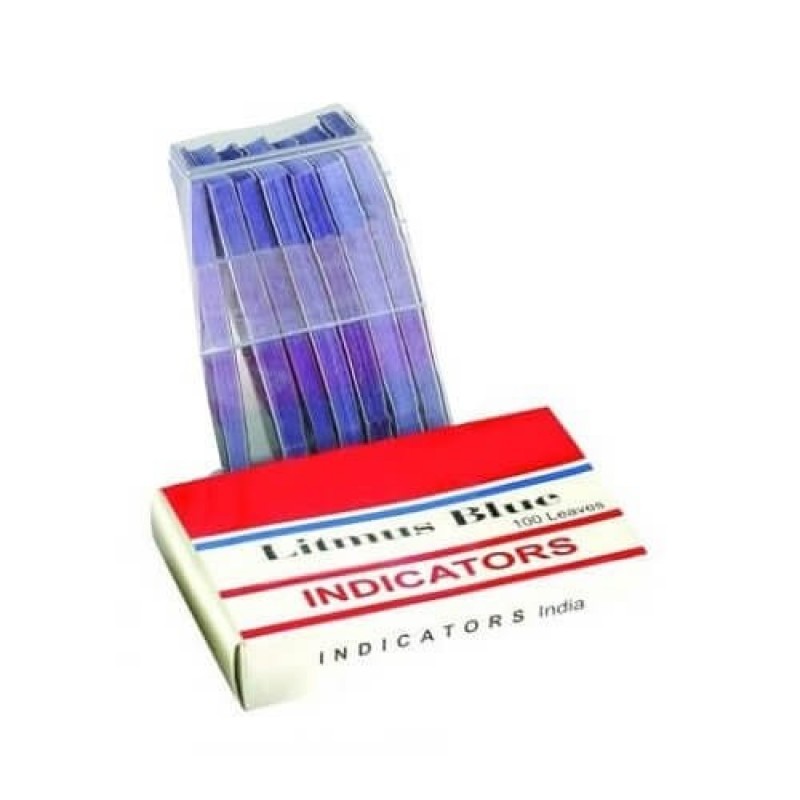
Price :
৳150
৳200
Estimated Shipping Time: 5 days
Product SKU: eLx4221XVk
Litmus Paper Blue India (100 Strips)
Blue Litmus Indicators or Litmus Paper 100 Leaves/Box is most used in chemical laboratory in Bangladesh. Basically used in School, College, University Laboratory.
Blue Litmus is a water-soluble mixture of different dyes extracted from lichen. Dyeing filter paper either red or blue with this ink creates one of the oldest forms of testing alkalinity and acidity. Blue litmus paper turns Red under acidic conditions. Sold in boxes of 100 strips of paper. Made in India.
Litmus is a water-soluble mixture of different dyes extracted from lichens. It is often absorbed onto filter paper to produce one of the oldest forms of pH indicator, used to test materials for acidity.The main use of litmus is to test whether a solution is acidic or basic, as blue litmus paper turns red under acidic conditions, and red litmus paper turns blue under basic or alkaline conditions, with the color change occurring over the pH range 4.5–8.3 at 25 °C (77 °F). Neutral litmus paper is purple.[2] Wet litmus paper can also be used to test for water-soluble gases that affect acidity or basicity; the gas dissolves in the water and the resulting solution colors the litmus paper. For instance, ammonia gas, which is alkaline, turns red litmus paper blue. While all litmus paper acts as pH paper, the opposite is not true.
Litmus can also be prepared as an aqueous solution that functions similarly. Under acidic conditions, the solution is red, and under alkaline conditions, the solution is blue.
Chemical reactions other than acid–base can also cause a color change to litmus paper. For instance, chlorine gas turns blue litmus paper white; the litmus dye is bleached[3] because hypochlorite ions are present. This reaction is irreversible, so the litmus is not acting as an indicator in this situation.
report regarding this chemical then contact us support@echem.com.bd.
Litmus paper is a staple in laboratory settings, primarily used to test the pH of a solution. The blue litmus paper is specifically designed to turn red in acidic solutions, while it remains blue in alkaline or neutral solutions. It serves as a quick and reliable indicator of whether a substance is acidic or basic. Litmus paper strips are typically small, rectangular pieces of paper impregnated with the litmus dye. They are convenient to use and offer rapid results, making them indispensable for various experiments and analyses in laboratories. Additionally, they are cost-effective and readily available, making them essential items for any lab conducting pH testing or acid-base experiments
essential features of Litmus blue test strips commonly used in laboratory settings:
Color Change Indicator: Litmus blue strips contain a pH-sensitive dye that changes color in response to variations in acidity or alkalinity. This allows for quick visual identification of the pH level of a solution.
Wide pH Range: These strips typically cover a broad pH range, making them versatile for various applications. They can indicate acidic, neutral, and alkaline conditions within the range they are designed for.
Easy-to-Read Results: Litmus blue strips provide clear and easily interpretable results. The color change corresponds to specific pH levels, allowing users to quickly determine the acidity or alkalinity of a solution.
Quick Response Time: Litmus blue strips offer rapid results, often changing color within seconds of being immersed in a solution. This speed is particularly advantageous in situations where quick assessments are required.
Cost-Effective: Compared to other pH testing methods, Litmus blue strips are often more cost-effective, making them a popular choice for routine pH testing in laboratories where budget constraints are a consideration.
No Review Found.
Login To Comment